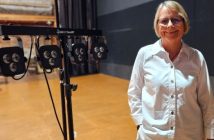Distinguished Professor Emeritus Paul Spoonley says funding superannuation and health costs for an ageing population is a looming problem for New Zealand. Senior journalist Viv Posselt reports on the upheaval and stress it will cause.
The disruption set to come as New Zealand squares up to the challenge of supporting an ageing population amid fast-declining fertility is just around the corner, says the country’s pre-eminent commentator on population trends.
Distinguished Professor Emeritus Paul Spoonley predicts a transformative upheaval over the next two decades, one that will change the societal, cultural and demographic composition of New Zealand as we know it.
It will also create enormous financial stress as superannuation and health care costs are increasingly squeezed.
Speaking to the first Cambridge U3A (University of the Third Age) meeting for the year, Spoonley said the two main components driving the changes were a rapidly ageing population and fast-declining fertility rates, plus a drive towards urbanisation.
“When we talk about population decline, we’re talking about people who look like me,” he said. “Māori populations will grow, as will Pacific Island groups, but by far the fastest-growing population group will be Asians. We will go from being a young-dominant country to being one that is old-dominant, with almost a quarter over the age of 65. We have never had that before.”
At the same time, rapidly declining fertility rates put New Zealand at risk of being unable to replace its existing population without immigration.
“Kiwi baby boomers [a demographic cohort born between 1956 and 1964) recorded 4.3 births per woman. Today that is just 1.6, even slightly below that. If we get to 1.5, we get into a group called low fertility countries,” he said. “More children are born to women aged 40 and over now than to women aged 20 and under. By 2030, there will be 30,000 fewer children in our education system.”
Impacting that is that women today are becoming better educated than in the past, creating a workforce that is often 50/50 gender-equal. The cost of child-rearing another factor, meaning many who opt for children will have just one.
That was a problem facing many countries, he said, and efforts by their governments to boost fertility rates with the offer of benefits, including tax breaks, were proving ineffective.
Adding to New Zealand’s demographic upheaval is increasing urbanisation. Spoonley said that the Auckland, Hamilton and Tauranga ‘triangle’ was the centre for population growth in New Zealand, while populations elsewhere will either stagnate or decline.
Some regions will face ‘hyper-ageing’ where between 30 to 50 percent of their populations will be over 65. An increase in life expectancy here as in many other parts of the world added to the problem.
“Have we prepared for that? No,” he said.
He told the meeting that part of the problem was that the restrictive government cycle was not conducive to making long-term plans.
“I do have some frustration about that. Talking to politicians on a three-year cycle about things that will happen in 30 years’ time can feel like a wasted effort.”
In 2019, Spoonley left the role of Pro Vice-Chancellor of Massey University’s College of Humanities and Social Studies. Since 2013 he has been a Visiting Researcher at the Germany-based Max Planck Institute for the Study of Religious and Ethnic Diversity. He was awarded the Science and Technology Medal by the Royal Society in 2009 for cross-cultural understanding, and was a Fullbright Senior Scholar at the University of California Berkeley in 2010.
His latest book – he has authored 29 – is entitled ‘The New New Zealand. Facing demographic disruption’, examines the country rapidly changing population and the ways it is already disrupting the status quo.







